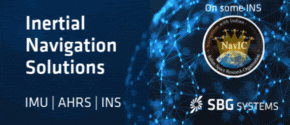Articles in the Applications Category

Valuation of real estate/ properties is in many countries/ cities the basis for fair taxation. The property value depends on many aspects, including the physical real world aspects (geometries, material of object as build) and legal/ virtual aspects (rights, restrictions, responsibilities, zoning/development plans applicable to the objects spaces). The aim of this study is to investigate the opportunities provided by the semantically rich 3D building and cadastral models for valuation and taxation. In this paper we investigate the following related aspects…

The most basic operation of a vessel monitoring system is to determine the location of the vessel at a given time, and periodically send this information, usually by satellite, to a monitoring station ashore. Most of vessels are tracked using the purple finder. This finder uses various satellites like Inmarsat, Globalstar and Thuraya for tracking the vessel. INMARSAT-C has been the most considered choice, since INMARSAT transceiver is already fitted onboard many ocean-going vessels as required by GMDSS (Global Maritime Distress and safety System).

This paper introduces a new framework to utilise Volunteered Geographic Service (VGS) for identifying and distributing potential help requests as volunteered services in an automatic and proactive way among potential volunteers in situ right after a disaster
Arash Kaviani
Research Associate, Centre for SDIs and Land, Administration (CSDILA), Department of Infrastructure Engineering, The University of Melbourne, Australia
Professor …

European Geostationary Navigation Overlay Service (EGNOS), the European Satellite Based Augmentation System (SBAS), provides corrections and integrity information to GPS signals over a broad area centred over Europe, and is fully interoperable with other existing SBAS systems (e.g., WAAS, the brand name of the American SBAS).
















 (5.00 out of 5)
(5.00 out of 5)